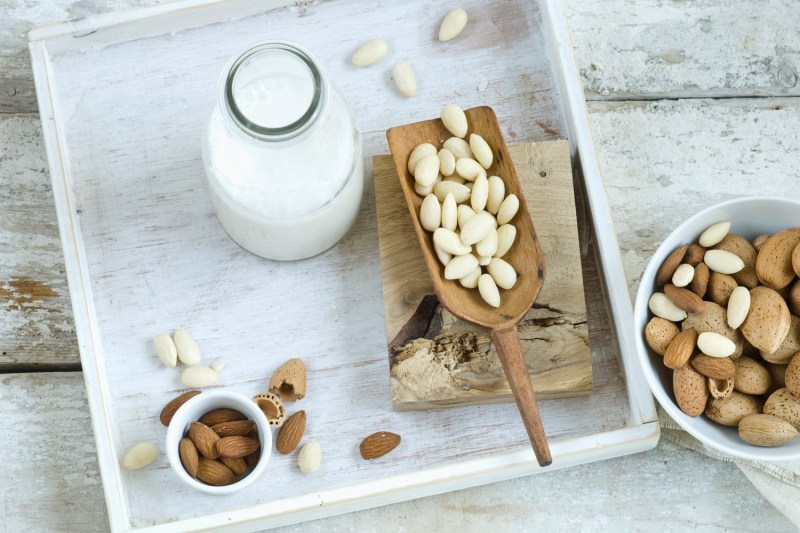Many people find that cutting out dairy is one of the hardest parts about going vegan. Milk, cheese, cream, ice cream, yogurt, and butter are certainly prevalent in the typical American diet and found as an ingredient in many foods. Although you can now buy many plant-based alternative milks, such as almond milk, soy milk, rice milk, cashew milk, hemp milk, and coconut milk, at most grocery stores, these plant-based milks can be quite expensive. If you’re a big milk drinker, switching to plant-based milk can cause a hefty hike to your grocery bill, especially if you’re buying organic vegan milks.
The good news is that you can make your own plant-based milks at home with just a few ingredients and simple steps. Ready to save some money and tackle some DIY plant-based milk recipes? Keep reading to learn how to make almond milk and other nut milks at home.

How to Make Almond Milk At Home
You can easily make almond milk, or any nut milk (cashew, hazelnut, pecan, etc.) with a blender and a cheesecloth to strain the mixture.
Although the actual preparation takes only a few minutes, you need to soak the almonds or nuts overnight to optimize the smoothness and flavor of your nut milk.
Step 1: Measure 1 cup of raw almonds or any other raw almonds into a large bowl or mason jar that has at least half the available volume remaining.
Step 2: Fill the container with filtered water. Optional: add a squeeze of lemon juice.
Step 3: Soak the almonds or nuts overnight, or for at least 8 hours.
Step 4: Drain and rinse the almonds and add them to a blender. If you prefer a richer, thicker almond milk, do not drain and rinse the nuts; pour them directly into the blender with their soaking liquid.
Step 5: Add 3 cups of filtered water (2 cups if you keep the soaking liquid).
Step 6: Blend until very smooth (60 seconds or more).
Step 7: Strain the mixture through a cheesecloth into a clean container. Squeeze the cheesecloth afterwards to pass any extra liquid through. You can use the almond pulp in your cereal, oatmeal, granola, smoothies, etc.
Step 8: Add a pinch of salt, and any additional flavorings, such as vanilla extract or cinnamon.
Step 9: Store in the refrigerator.
If you’re less of a recipe follower and want the ultimate convenience when it comes to making dairy-free milks at home, consider investing in something like the Nutr Machine or the Almond Cow’s Milk Maker. These sleek gadgets are zero-waste alternatives to buying store-bought plant-based milks, and don’t require any work or time on your end. To use the Nutr machine or the Almond Cow Milk Maker, all you have to do is add water and any nut, seed, or grain, press one button, and this machine automatically produces 5-6 cups of fresh, plant-based milk in less than a minute.




